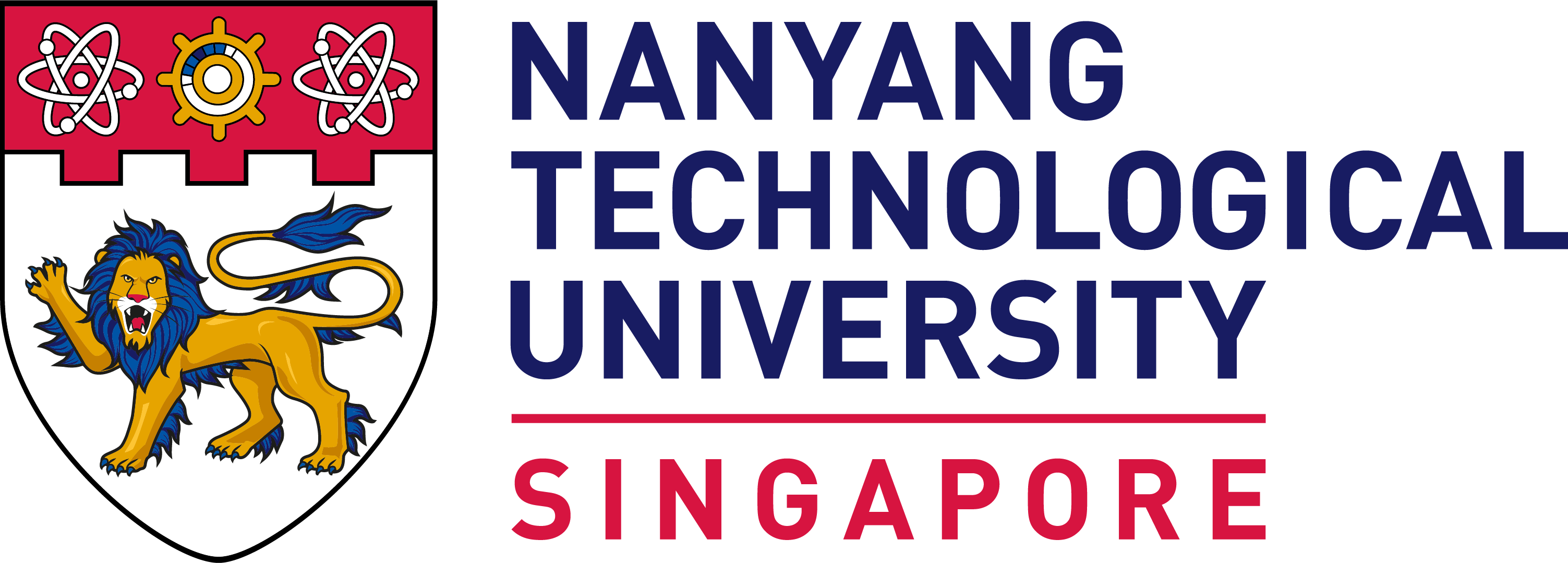Staff Profile: Up Close & Personal with Assistant Professor Andrea Pavesi
 | By Sanjay Devaraja, Editor, LKCMedicine's Redefine Newsletter |

Andrea Pavesi is an Assistant Professor of Cancer Biology at LKCMedicine whose work focuses on developing in vitro models that mimic the human tumour immunocompetent microenvironment. He specialises in assessing and enhancing immune cell populations to improve their efficacy against solid tumours. He also holds a Principal Investigator position at the Institute of Molecular and Cell Biology (IMCB), Agency for Science, Technology and Research (A*STAR), and was recently appointed the Vice President of the Singapore Society for Cell Biology.
Throughout his career, Assistant Professor Pavesi has received several awards and grants, including the A*STAR Dedicated Service Award in 2023 and the Interstellar Initiative award from the New York Academy of Science in 2019. His work has been featured in various publications, highlighting advancements in cancer research and innovative therapeutic strategies.
We speak to Assistant Professor Pavesi on his cutting-edge research dedicated to advancing cancer treatment and providing transformative solutions for patients.

Tell us about your journey in cancer research and what led you to specialise in tumour microenvironments?
My journey into cancer research took a significant turn during a visit to Professor Roger Kamm’s laboratory at Massachusetts Institute of Technology (MIT) while I was pursuing my PhD. Initially, my focus was on cardiac tissue engineering, specifically the design of mechanical heart valves. However, after being exposed to Professor Kamm’s studies on tumor microenvironments, I became fascinated by the intricate interactions between cancer cells and immune cells. Observing how microfluidic technologies could replicate these complex processes opened my eyes to new research possibilities. This experience, further enhanced during my subsequent postdoctoral training in the same lab, convinced me that advances in vitro models could be key in understanding and ultimately controlling the intricate behaviours of solid tumours.
Your work involves developing in vitro models to mimic the tumour microenvironment. What are the biggest challenges in creating accurate models?
George Box (British statistician) famously said, “All models are wrong, but some are useful.” This captures the delicate balance of emulating the tumour microenvironment while accepting that no lab-based system can perfectly replicate actual tumours. My goal is to include the key variables, particularly the crosstalk among cancer cells, immune cells, and vasculature, so that we can identify mechanisms of disease progression, how drugs act, and how to tailor treatments to individual patients. One major challenge is sourcing the right tissue/cells – ideally, patient-derived samples best reflect the diversity of real tumours, but they can be difficult to obtain and standardise. Balancing reproducibility, and accessibility is essential. I want to create a robust, user-friendly tool that labs worldwide can adopt for meaningful discoveries in personalised cancer medicine.
How do organ-on-a-chip technologies improve our understanding of cancer compared to traditional research methods?
Organ-on-a-chip platforms allow us to recreate key physiological features, such as fluid flow, mechanical forces, and 3D architecture, in a way that more closely mimics the human body than conventional 2D cell culture. These microscale systems enable real-time observation of cell behaviour under controlled conditions, providing insights that may be lost in standard petri dish experiments. They also allow multiple cell types (including immune and stromal cells) to coexist in the same environment and interact naturally. By tailoring various biochemical gradients or flow rates, we can observe how tumours evolve and respond to therapy in an environment that better mirrors the human condition. Ultimately, these platforms bring us closer to personalised medicine by predicting patient-specific outcomes more reliably.
How do you envision your research contributing to future cancer treatments?
I hope that my in vitro platforms will accelerate the evaluation and optimisation of novel therapies, particularly those relying on immunomodulation, positively impacting patients. By dissecting how immune cells interact with tumours under realistic conditions, we can identify more effective combinations of drugs, or even pinpoint new molecular targets for intervention. In the long run, these insights might lead to tailored treatments that consider each patient’s unique tumour microenvironment. With more predictive models, we can reduce the cost and time associated with animal studies and clinical trials, ultimately getting life-saving treatments to patients faster. This vision is based on creating robust, patient-relevant data that clinicians can trust when making therapeutic decisions.
Are there any recent breakthroughs in immune cell engineering that you find particularly promising?
One exciting area is developing next-generation Chimeric Antigen Receptor T-cell (CAR-T) cells engineered to overcome the immune-suppressive signals present in solid tumours. In addition, Clustered Regularly Interspaced Short Palindromic Repeats, or CRISPR-based gene editing has allowed researchers to fine-tune immune cells more precisely, potentially enhancing their persistence, targeting abilities and safety. There have also been breakthroughs involving T-cell receptor (TCR) engineering, which can broaden the types of tumours targeted beyond the antigens recognised by conventional CAR-T therapies. These advances suggest that immune cell therapies will soon become more versatile and practical, especially when combined with strategies to improve their efficiency once the tumour microenvironment is reached. They offer hope for patients whose cancers have been resistant to traditional treatments.
What are the main hurdles in translating your research from the lab to clinical applications?
One of the most significant challenges in advancing laboratory discoveries to the bedside is building a strong, collaborative environment between scientists and clinicians. While microphysiological systems, in vitro models, and other cutting-edge methods have great potential, their impact hinges on clinicians who are willing to support these new technologies and push boundaries in patient care. Historically, it has been difficult to find enough clinicians ready to go the extra mile, helping generate meaningful patient data and speeding the regulatory process that turns scientific proof-of-concept into real-world therapies.
However, this is rapidly changing. At LKCMedicine, for example, there is a growing emphasis on bringing researchers and clinicians together to share ideas, resources, and a collective sense of urgency in serving patients. By fostering genuine partnerships that encourage open dialogue, co-development of protocols, and a willingness to apply new solutions quickly, we are establishing a productive ground for translational breakthroughs. In this environment, the problematic link between lab and clinic can be bridged more effectively, ensuring that promising discoveries benefit patients as quickly as possible.
Are there any upcoming projects or partnerships that you are particularly excited about?
I am genuinely excited about several new collaborations that I believe will significantly advance our understanding of cancer biology and the human tumour microenvironment. Since joining the Cancer Discovery and Regenerative Medicine division at LKCMedicine, I have been enthusiastic to work closely with clinicians who share the goal of translating novel discoveries into tangible patient benefits. By offering my expertise in microphysiological systems, I hope to create innovative platforms that explore intricate cellular interactions within complex tissue settings.
Beyond this, I plan to strengthen connections with local research hubs across Singapore, such as the Duke-NUS, Mechanobiology Institute at NUS and A*STAR, to harness their complementary technologies and deepen our collective impact. Internationally, my ongoing collaborations with Karolinska Institute and Uppsala University will allow us to refine our understanding of T-cell biology and tertiary lymphatic structures, while continuing work with colleagues at MIT aims to enhance CAR-T cell targeting of glioblastoma. Altogether, these partnerships promise to stimulate breakthroughs in fundamental research and clinical applications.
How do you think artificial intelligence (AI) could enhance cancer biology research?
Definitely. AI offers an extraordinary capacity to analyse and interpret complex datasets, a critical need in cancer biology where large-scale genomic and proteomic information must be filtered through for meaningful insights. Through advanced machine learning algorithms, AI can identify subtle patterns in patient data, suggesting novel biomarkers and potential therapeutic targets that might otherwise remain hidden. Predictive models also help optimise drug discovery by pinpointing promising molecules early in the research process, substantially cutting costs and development times. Furthermore, AI-based diagnostic tools could improve accuracy in detecting cancers at an earlier stage, potentially increasing survival rates. Integrating AI into ongoing research also supports personalised medicine, as data-driven insights guide treatment decisions tailored to an individual’s genetic makeup. Overall, AI holds immense promise for accelerating breakthroughs, refining diagnostic accuracy, and ultimately improving patient outcomes in cancer care.
Moving away from your research work, what are your hobbies, interests, and how has your life been after moving to Singapore?
I have been in Singapore for nearly 13 years, and during this time, I have gradually incorporated myself into the local cultural and social atmosphere the city has to offer. Beyond exploring food options (a national hobby), I lead an active lifestyle that includes running every other day, practising yoga, and occasionally racing sailboats when the opportunity arises. I was on a competitive sailing team back at my university. More recently, I have taken up golf, even though it’s quite a challenging sport, and these outings sometimes lead me to scenic spots in Malaysia and Indonesia.


I was also involved with the Singapore Freediver Association, enjoying trips for spearfishing and beachside cookouts. On top of all these activities, I spend a lot of time with my two children, exploring parks, cycling, and enjoying Singapore’s outdoor spaces. Growing up in Italy between the mountains and the sea impacted my love for the outdoors, and I still enjoy skiing trips whenever possible. Ultimately, Singapore’s vibrant environment and warm climate complement my active lifestyle, allowing me to merge my love for new cultural experiences with my passion for staying on the move.


It has been five months (as of April 2025) since you joined LKCMedicine. How has your experience been so far?
Time has flown by in what feels like an instant, and it’s hard to believe that I have already surpassed the five-month mark at LKCMedicine. The past few months have been busy and exciting as I acclimate to a new academic environment, discover different grant opportunities, and focus on establishing my lab. From the initial challenges of organising the lab space to purchasing equipment and building a cohesive team, each step has brought a sense of accomplishment and anticipation for what lies ahead. I have also been actively recruiting new talent, research assistants, and students, who share my enthusiasm for pushing scientific boundaries. Throughout this period, I have enjoyed tapping into LKCMedicine’s supportive community. Every day, I feel energised by the prospect of laying a strong foundation for innovative research while fostering an environment where creativity and discovery can genuinely coexist.
How do you see your new role as an Assistant Professor at LKCMedicine shaping your research and career?
Stepping into the role of Assistant Professor presents a unique opportunity to drive my research in new, meaningful directions while also shaping the next generation of scientists. With increased autonomy, I can initiate collaborative projects, secure research funding, and guide the scientific focus of my laboratory more strategically. Mentoring students and junior researchers is also a central part of this position, allowing me to share insights, cultivate their growth, and foster an environment where curiosity and innovation thrive. At LKCMedicine, there is a strong emphasis on practical, translational outcomes, which motivates me to align my research efforts closely with patient needs and societal impact. Additionally, this role encourages me to expand my professional network, building interdisciplinary collaborations that enrich my work and open doors to new discoveries. In many ways, being an Assistant Professor here is a pivotal phase in my career, as it merges scientific ambition with mentorship and leadership, setting the stage for long-term impact in cancer research.


